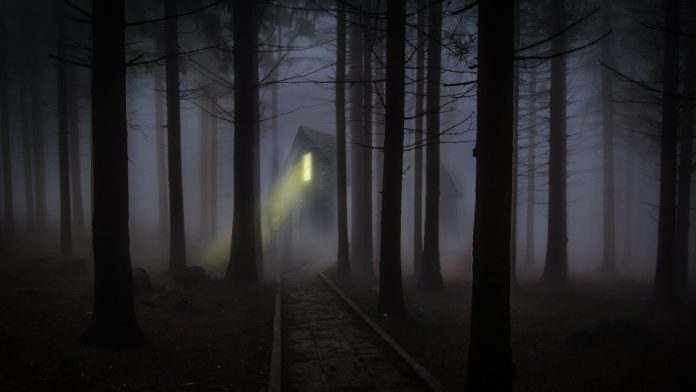It’s a dark and stormy night. You’re taking the shortcut through campus to get to home when suddenly you can tell you’re not alone. You look around, frantically searching the shadows. Maybe you’re passing University College at the University of Toronto, and the ghost of Ivan Reznikoff is lurking beside the door where the mark of the axe that killed him is still visible in the old wood.
University College at the University of Toronto is said to be haunted
Maybe you’re on University Boulevard at UBC, where the ghost of a young woman killed in a car accident will forever hitchhike.
Maybe you’re standing in front of Rutherford House at the University of Alberta, where the ghost of a little boy dressed like he’s from the 1920s silently bounces a little blue ball.
These are all just stories; there’s no such thing as ghosts, right?
It’s alive!
If you’re seeing ghosts, there may very well be something in the room with you, but it might not be supernatural. Prof. Shane Rogers from Clarkson University in New York is studying the potential correlation between mold and ghost sightings. It makes sense. Mold has been known to cause neuropsychiatric symptoms like hallucinations and delusions, and many reportedly haunted locations are old, dark, and damp; the perfect habitat for mold. Rogers spent the summer touring spooky buildings in New York taking air samples. By comparing samples from haunted locations to normal samples, Rogers hopes to find a moldy connection that can help us figure out the underlying cause of ghost sightings.
Prof. Shane Rogers from Clarkson University is searching for ghosts and mold
Did you hear that?
Vic Tandy, a Professor at Coventry University, worked in a haunted engineering building. People in the building reported feelings of dread and dark apparitions. Tandy himself sat next to a grey figure for several minutes while in the lab one evening. When he turned to face it, it was gone. The next night while preparing his blade for a fencing competition, it wouldn’t stop vibrating. Ghosts are one thing, but vibrations are definitely a scientific phenomenon. After some investigation, Tandy found that a fan in the room was emitting infrasound, causing the blade to resonate.
Neil DeGrasse Tyson describes Prof. Vic Tandy’s ghostly encounter
Infrasound is a sound with a frequency between 7 and 19 Hz. This frequency is so low that you can’t hear it, but you can still feel it. It gives you shivers, it induces feelings of anxiety and dread, it can even make your eyeballs resonate so that small static objects looks like large, moving shapes. Sounds like the perfect recipe for a haunting.
Feelings of fear
During this next experiment, two of the 12 participants were so disturbed, they asked for it to stop. No, we’re not talking about the insane asylum in the second season of American Horror Story. This study took place in Switzerland just over a year ago, where scientists were trying to prove that ghosts were just illusions created by our own brains.
To do this, Prof. Olaf Blanke from EPFL mixed up the signals between the participant’s body and their brain. Participants were blindfolded and asked to control a robotic arm. The movements of the robotic arm were relayed to another robot behind the participant that would poke them in the back. When the two movements were in sync, everything was fine. But when the poking was delayed by only half a second, strange things began to happen. Participants reported feeling ghostly presences in the room and the sensation of drifting backwards. Blanke had created ghosts in the lab!
Prof. Olaf Blanke explains how to create a “ghost”, Video from EPFL
Blanke explains that this can happen when the brain creates a second representation of the body due to confusing sensory input. This second representation of ourselves is perceived as a presence or ghost. Sensory input can be confusing because of neurological diseases such as schizophrenia, emotional stress, or, in this case, a robotic touch.
As for whether the ghost stories are true, you’ll just have to walk through campus in the dark and find out!









































